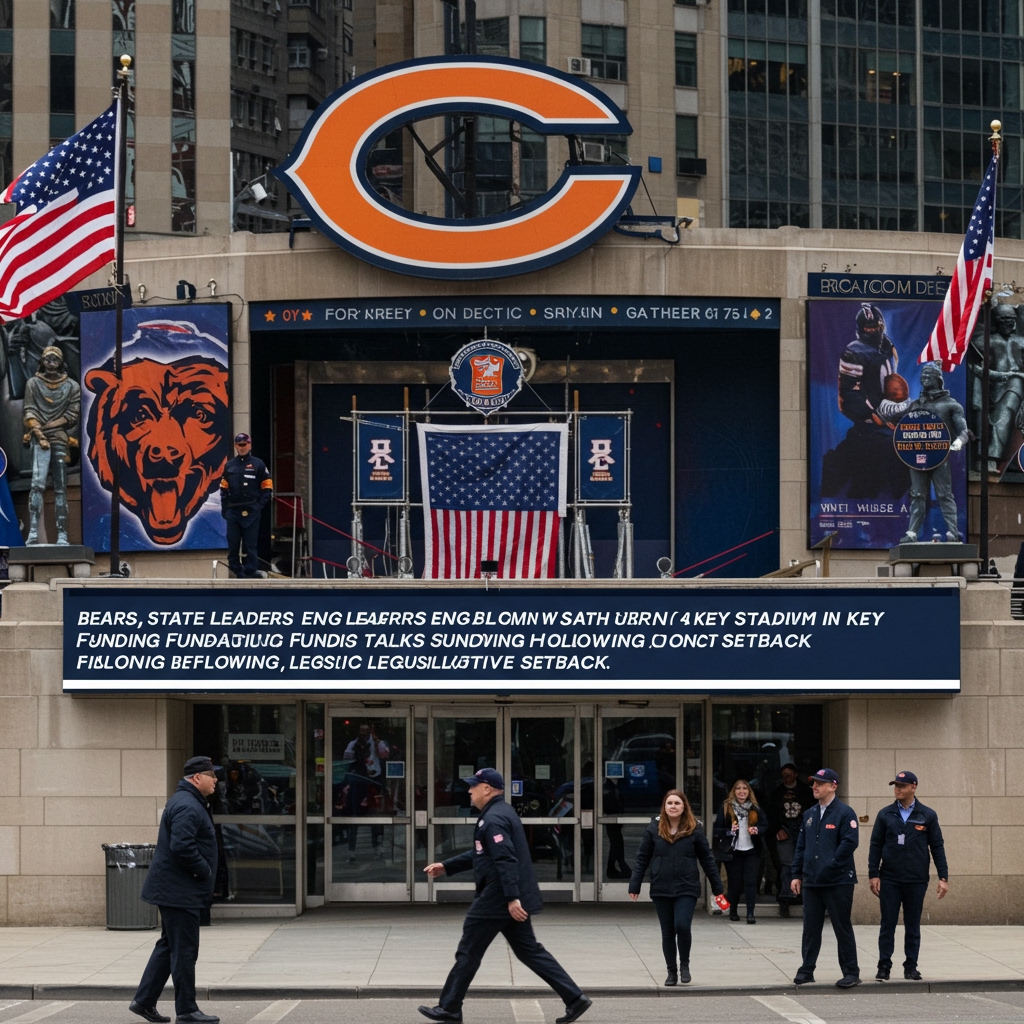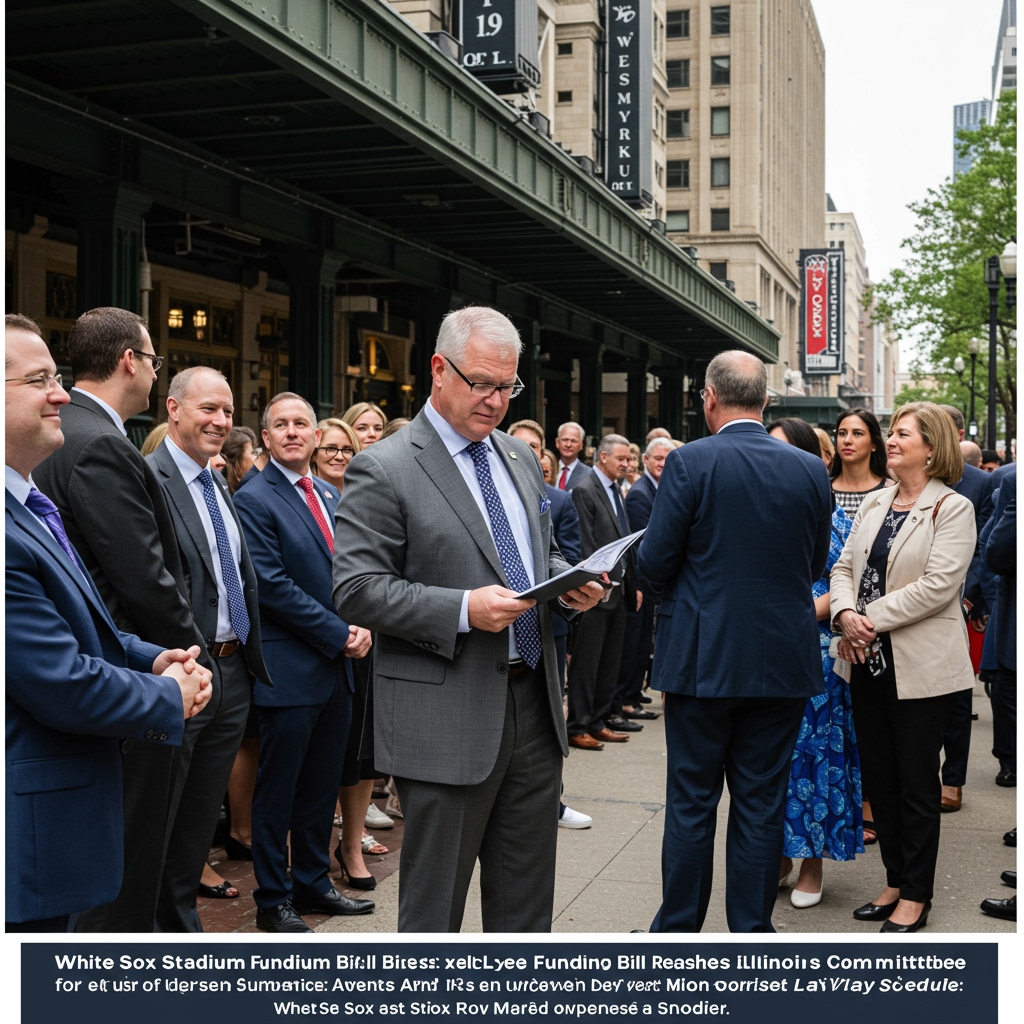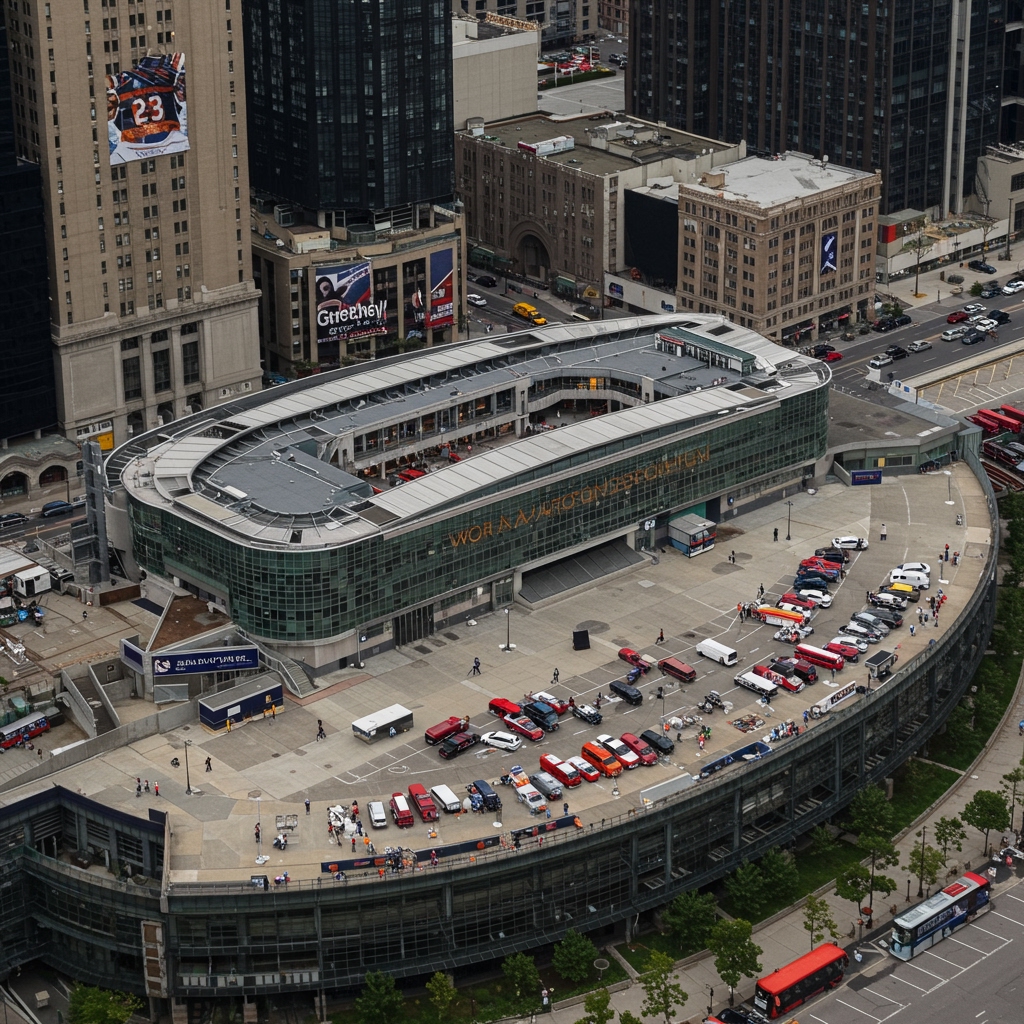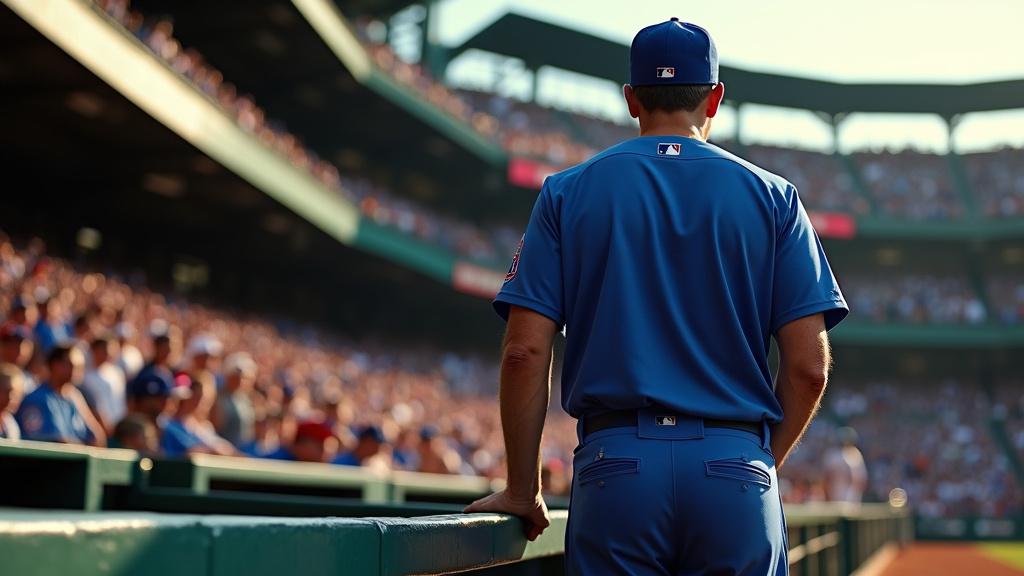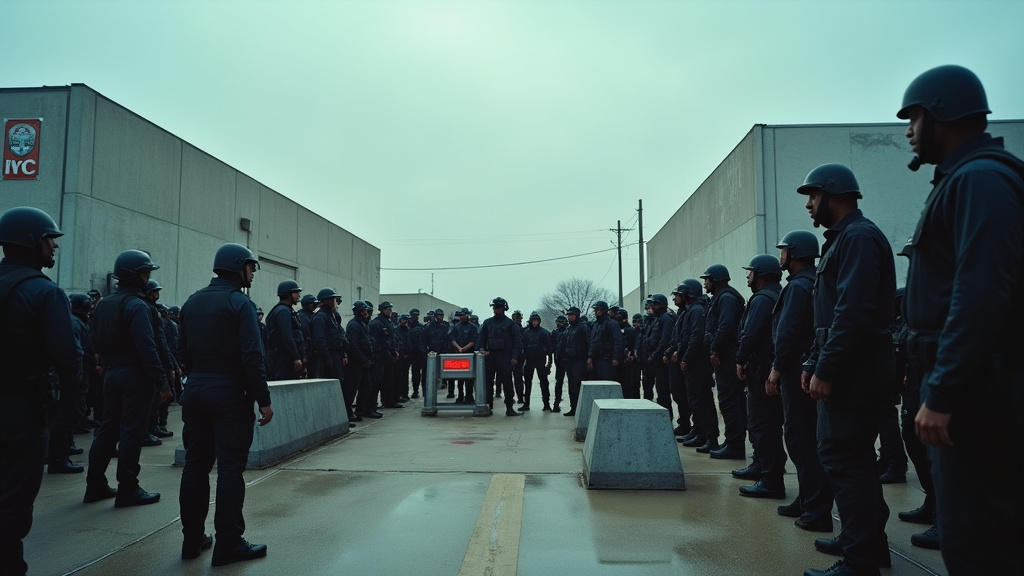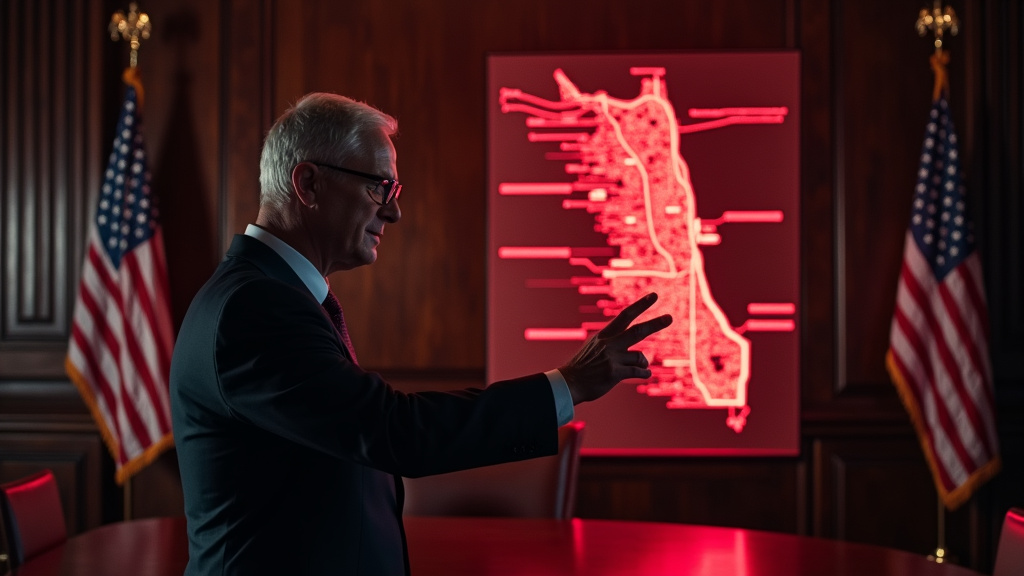Chicago, IL – In a highly anticipated reveal, Chicago Bears President Kevin Warren and Mayor Brandon Johnson stood together today to present comprehensive specifics of the team’s ambitious vision for a state-of-the-art stadium and sprawling entertainment district. The proposed complex, pegged with an estimated cost of approximately $4.7 billion, is slated for a prime location on the city’s iconic Lakefront, situated just south of the existing Soldier Field. This joint announcement marked a significant step forward for the long-discussed project, laying bare the financial framework that proponents hope will pave the way for its realization.
Funding Model Revealed
At the heart of the proposal is a meticulously detailed split-funding model designed to share the substantial costs between the private and public sectors. Under the plan unveiled today, the Chicago Bears organization has committed to shouldering the majority of the direct construction costs for the enclosed stadium itself, pledging approximately $2.4 billion in team investment. The remaining financial requirement, an estimated $2.3 billion, is proposed to be sourced from public funds.
Public Investment Strategy
The public component of the funding is strategically designated not for the stadium structure itself, but primarily for critical surrounding infrastructure, extensive public parkland development, and foundational elements essential to the entire complex. According to the details shared by city and team officials, these public funds would be generated through bonding authority. Crucially, this bonding authority would be backed by the city’s existing hotel tax revenue. This approach aims to utilize an established revenue stream derived from tourism and visitors, rather than imposing new taxes on Chicago residents. The $2.3 billion in public investment is intended to fund the creation of a vibrant, accessible public space around the stadium, improving transportation links, upgrading utilities, and building the necessary groundwork for both the stadium and the adjacent entertainment amenities.
Vision for the District
Beyond the enclosed stadium that would serve as the Bears’ new home, the proposal envisions a dynamic, year-round entertainment district. This integrated complex is planned to include a variety of public amenities, green spaces, potential retail outlets, and other attractions designed to draw visitors even when football is not being played. Proponents emphasize that the public investment in infrastructure and park space is intended to create a significant new civic asset for all Chicagoans, enhancing the Lakefront experience and generating economic activity through increased tourism and job creation. The scale of the proposed district suggests a transformative impact on the immediate area, integrating sports, recreation, and entertainment in a single locale.
Navigating the Lakefront Context
The choice of the Lakefront site, while offering unparalleled views and proximity to the downtown core and transit hubs, is not without its historical and public access considerations. The proposal aims to address concerns about developing on the protected Lakefront by emphasizing the creation of more public green space and improved access compared to the current configuration around Soldier Field. City and team leaders highlighted their intent to collaborate with various stakeholders to ensure the project aligns with Lakefront protection principles while creating a modern, accessible public destination. Soldier Field, the Bears’ current home, would eventually be repurposed or redeveloped, though specific plans for the historic stadium were not the focus of today’s announcement.
The Path to Approval
The unveiling of these financial specifics marks the transition of the proposal from conceptual planning to the critical phase of seeking formal approval. The proposed funding structure, particularly the request for $2.3 billion in public bonding backed by hotel tax revenue, requires legislative endorsement. The plan is now expected to face intense scrutiny and necessitate passage through the state legislature in Springfield. This legislative process will involve hearings, debates, and negotiations as state lawmakers evaluate the financial viability of the plan, the potential return on public investment, the assumed risks associated with the bonding authority, and the overall impact on the state’s finances and priorities.
Legislative Scrutiny Ahead
The road through Springfield is anticipated to be challenging. Lawmakers will examine projections for hotel tax revenue stability, particularly in light of economic fluctuations, to ensure the bonding authority is sound. Questions are also likely to arise regarding the allocation of public funds for infrastructure that supports a privately owned professional sports facility. Proponents will need to make a compelling case for the broader economic benefits and civic value of the project to gain the necessary political support for legislative passage. The timing and complexity of navigating the state’s legislative calendar add another layer of challenge to the proposal’s timeline.
Conclusion
The detailed $4.7 billion Lakefront stadium and entertainment district proposal, jointly presented by the Chicago Bears and Mayor Johnson, represents a monumental vision for the future of the team and a significant potential transformation of a key piece of Chicago’s Lakefront. With the team committing $2.4 billion and seeking $2.3 billion in public funding backed by hotel tax revenue for infrastructure and public spaces, the financial blueprint is now public. The fate of this ambitious project now rests squarely with the state legislature in Springfield, where the plan will undergo rigorous review before any construction can begin.



